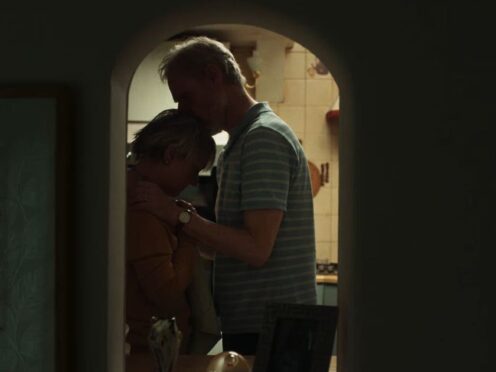
Adverts for the Alzheimer’s Society which detailed a woman’s death “again and again and again” have been cleared following 235 complaints that they were irresponsible and caused “unjustifiable distress”.
The three television ads and a radio ad, broadcast in March and April, featured a man talking at his mother’s wake, saying: “Mum first died on the 12th of May 2019 when she couldn’t work out how to prepare her legendary roast any more.”
He continued: “The style icon of the Covington estate. Mum died as a fashionista the day she couldn’t get dressed into her colourful outfits.

“She died as the queen of Christmas when she refused to have dinner with the family. She died again when she asked me, her son, what my name was. She died as dad’s rock after 52 years of marriage the day she looked straight through him.
“On the 10th of March 2024, mum died a final time, surrounded by her family.”
A voice-over then said: “With dementia, you don’t just die once. You die again and again and again. Which is why at Alzheimer’s Society we’ll be with you again and again and again.”
The ad switched between scenes of home videos of the woman when she was younger, enjoying time with friends, at Christmas and preparing a meal, and scenes of when she was older, including being supported by her son and a carer.
Viewers complained that the ads were excessively distressing, offensive and irresponsible.
The Alzheimer’s Society said it was “conscious from the outset that a campaign about the realities of dementia would be sensitive and potentially challenging for some audiences” and it approached the campaign with due care.
The charity said the script was written by a person who had lost their father to dementia 18 months previously “for whom the long goodbye rang true”.
Ad clearance agency Clearcast said they understood the ads could be upsetting but did not believe they were irresponsible or exploitative.
When approving the ads, they took into consideration that the Alzheimer’s Society was an authority on the issue, and provided support for people living with Alzheimer’s as well as investing in research into the disease.
The Advertising Standards Authority (ASA) said the ads, and particularly the references to death, could cause a significant emotional impact with a wider audience.
The ASA said: “We acknowledged that the ads, and particularly the references to dying ‘again and again and again’ were likely to cause potentially significant distress to some people with Alzheimer’s, particularly to those who had recently been diagnosed.
“However, we considered that the ads presented an accurate and sensitively delivered portrayal of the reality of the disease.”
It added: “Overall, we considered that any distress caused was justified by the ads’ messages.
“For the reasons set out above we concluded that the ads were not irresponsible, did not cause serious or widespread offence, and did not cause unjustifiable distress.”
The Alzheimer’s Society’s director of income and engagement Alex Hyde-Smith said: “At every stage of development of ‘The Long Goodbye’, immense care went into ensuring we’re telling this story compassionately and authentically. It was never our intention to cause distress.
“We’ve heard from a huge number of people who’ve felt this is the first advert that truly represents their dementia experience. These people have expressed relief and gratitude for the campaign – finally showing them that many other people have experienced the same, utterly unacceptable levels of pain and struggle that they and their families went through.
“An important debate has begun and, ultimately, we need to keep telling the truth about this devastating illness to ensure dementia gets the long overdue attention it deserves.”

Enjoy the convenience of having The Sunday Post delivered as a digital ePaper straight to your smartphone, tablet or computer.
Subscribe for only £5.49 a month and enjoy all the benefits of the printed paper as a digital replica.
Subscribe